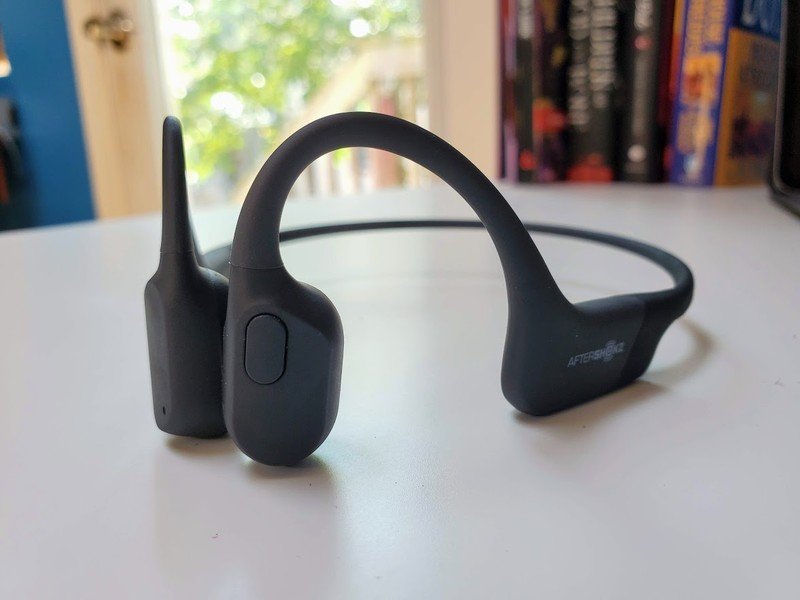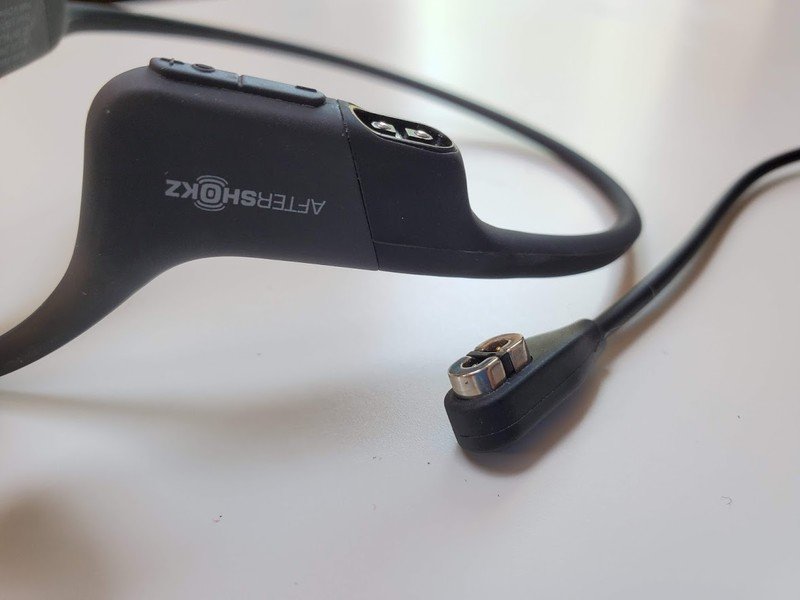I need to be able to hear what's happening around me when I'm on my bike. No offense to the car drivers I share the road with every day, but the fatality rate is just too damn high for cyclists and I need to protect myself with every tool I can. I also don't need to share what I'm listening to with the rest of the world. For a long time now, I've met this goal by relying on bone conduction headphones, which ensure I can listen to my favorite podcasts without losing the ability to hear a car come at me from a reasonable distance.
If you had asked me which headphones were good for outdoor use a few weeks ago, I'd have given you a lengthy explanation of why I prefer Aftershokz bone conduction headphones but how they might not necessarily be your thing. Bone conduction, by design, includes a vibration against the skin at higher volumes that can be uncomfortable or awkward to feel. They were water-resistant enough to survive getting caught in a rainstorm, but not enough for people who need more. And if you're excited about bass, you'll find bone conduction headphones lacking.
That was then. This is now.
Aeropex are the latest bone conduction headphones from Aftershokz, which the company sent to me a couple of weeks ago to try out. Since then, I basically haven't stopped wearing them because I don't have to. These headphones don't feel like a compromise anymore, they just feel like great headphones I want to wear everywhere.
The good
- All-day comfort
- Way less pad vibration
- Google Assistant Ready
- Solid battery life
- Improved audio quality
The bad
- Power button is a little mushy
- "Smart" assistant isn't as useful as Fast Pair
- I want configurable buttons
Aftershokz Aeropex What I like

Out of the box, these headphones are undeniably Aftershokz. The wrap-around design with a pair of speaker pads, which rest around your ears with thicker battery sections tucked behind the ears, are basically iconic at this point if you follow bone conduction headphones (that's a normal thing everyone does, right?).
However, unlike the Trekz Air and Trekz Titanium headphones, Aeropex are super flexible everywhere. You can lean back against your chair and the headphones will flex to match you instead of moving the bone conduction pads out of place, for example. It has taken a few iterations to get this right, but with Aeropex the Aftershokz folks finally nailed it.
The total improvement in sound quality is deeply appreciated.
I fished around in the box expecting to find a Micro-USB or USB-C cable in the box, and was instead met with a weird proprietary thing. This generation, Aftershokz is going magnetic for its charger; just drop it on the pad, the magnets click, and the charging light on the headphones starts glowing. Couldn't be easier, and if you're like me and are guaranteed to misplace this cable in about a week don't worry — Aftershokz includes a second cable in the box! This means I can keep one on my desk and one in the little carry case included in the box, which is the way it needs to be if you offer a proprietary charger. Additionally, this switch to magnetic is what allows Aeropex to be water-resistant down to one meter for up to 30 minutes. I jumped in a couple of pools with mine over the last couple of weeks, and it works exactly as advertised.
The main event with Aeropex, however, is the improvements to sound quality. Unlike its predecessors, the Aeropex spreads the bone conduction out across the entire pad resting on your head. There's no separate piece sticking out to ensure the connection is made. Instead, these headphones just do a better job hugging your head. As a result, the conductive surface is spread out a lot more. This means more of your skull is absorbing the sound, which means Aeropex can do a little more to deliver better quality.
The results are crystal clear highs and mids, with actual bass traveling to your ears. Now, don't misunderstand, this isn't any kind of bass my dubstep fam would consider enough to get their jam on. It's not a lot of bass, but unlike other bone conduction headsets the bass isn't completely crushed or turned into uncomfortable vibration. That alone raises these headphones up a notch for me, but the total improvement is sound is deeply appreciated. Owners of previous Aftershokz products will immediately recognize the quality improvement, but more importantly people who just enjoy normal headphones won't feel like this is a serious downgrade. Bone Conduction will never be exactly as crystal clear as something you're sticking in your ear or covering your ear to absorb, but the sound on Aeropex cuts through a lot of the previous hedging I used to do when describing this tech to people.
While these headphones are clearly smaller than its older cousins, the battery life is noticeably improved. I could kill the original Trekz Titanium headphones in about four hours on my bike, and while the Trekz Titanium are better they still didn't get me through a full day of airplane travel. Aeropex claims eight hours of power through constant usage, and they deliver. It's actually a challenge for me to drain these in a full day of use, which is incredible given the size.
When you include the changes to comfort, I have on multiple occasions put these headphones on first thing in the morning and kept them on until the end of the day just because I could.
While this isn't the most important feature in the world, a long press on the activity button on the side of the headphones gives me access to Google Assistant. This is great if I want to grab a different album to listen to, but it's not that full Assistant access I really crave. These headphones won't tell me when I've received a notification and let me respond to a message, for example, but it's still a super handy thing to have access to when you need it, especially when you're going faster than you probably should on your bike and your phone is in your rear jersey pocket.
Aftershokz Aeropex: What I don't like

Like its predecessors, Aeropex has three whole buttons on the body. There's the action button for play/pause and Assistant and things like that, as well as a volume rocker. The volume up key is also the power button, which you access by long-pressing instead of quickly tapping to change volume. These volume keys on Aeropex are a little on the squishy side though, which means actually turning the headset on and off requires a little more force and focus than I'd like. It's not a huge deal, but far more difficult to make a sort of muscle memory thing based on my use.
Bone conduction headphones are, by design, a compromise.
The action button, as with most headphones, is... fine. It does the whole play/pause thing like it's supposed to. I can skip songs and summon Google Assistant with different key combos if I need to, but like most Bluetooth headphones I have no control over what these combos are. One of the options when not listening to music is to redial the last number dialed on my phone. If I double-tap the action button, it will dial up the last number called. I can't stress how I've never wanted to use this feature, but you wouldn't know that by how frequently I accidentally trigger it. I'm sure this feature is useful to someone, but that someone isn't me and the ability to edit what these buttons do would be awesome.
Instead of smarter buttons, what Aeropex offers is a "smart" assistant to help with the pairing process. Aftershokz calls this system Audrey, and while it's a fine system and doesn't get in the way of Google Assistant it's a little basic. The first time you power up Aeropex you get a friendly voice walking you through the pairing process with your phone. It's a friendly enough system, and while I didn't need the help I can see how it would be useful for a lot of folks. Plus, it's available in multiple languages out of the box and cycling through the languages is a breeze which is a great way to make this something as many people as possible can use.
However, as I'm using it, I couldn't help but feel like using Google's Android Fast Pair tech would have made this even less of a hassle. While I know Aftershokz is servicing more than just Android users with these headphones, it really seems like adding that feature would be a huge win for an already great headset.
Aftershokz Aeropex: Should you buy it? Absolutely
Bone conduction headphones are, by design, a compromise. You are trading the ability to fully immerse yourself in sound for the ability to hear the world around you. When I'm sitting at my desk, I want big ol' cups on my head and I want to disappear into a decent album while I work.
4.5 out of 5
But when I'm not wearing those headphones, I'm already accepting some level of compromise. And unlike previous generations, Aeropex doesn't feel like any more of a compromise than a nice set of wireless earbuds. I'm not just grabbing these because I want to feel safe anymore, I'm grabbing them because I genuinely enjoy using them everywhere. And at $160, I'm able to do so without feeling like I'm emptying my wallet.


